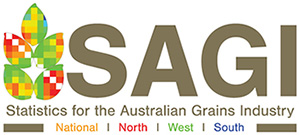The statistical skills of grains researchers and agronomists throughout the southern cropping region are being taken to a new level, thanks to training support being offered through the Grains Research and Development Corporation’s Statistics for the Australian Grains Industry (SAGI) program.
A new suite of practical, interactive workshops – available to grains industry practitioners in South Australia, Victoria and Tasmania – is now underway to foster widespread adoption of efficient and consistent statistical methods in agronomic research and practice to ultimately better inform growers’ decision-making.
The GRDC earlier this year launched phase three of its SAGI initiative, involving the creation of four nodes (three regional and one national) to deliver high quality statistical science to underpin the scientific rigour of hundreds of research projects.
The SAGI-3 investment of $18 million over the next five years will be essential in supporting rapid advances in crop varieties, agronomic knowledge and farming practices – contributing to enduring profitability for Australian grain growers.
Each of the three regional SAGI Nodes (South, North and West) is responsible for providing statistical training and support for regional agronomists; providing training, mentoring and statistical research collaborative support to researchers; and training a new generation of highly-skilled biometricians. The regional nodes will also provide support for trial design and data analysis for projects relevant to their regions.
SAGI South is being led by the University of Adelaide, with co-investment from the University and the South Australian Research and Development Institute. The SAGI South team is based at the Biometry Hub at the University’s Waite campus.
SAGI South project leader, senior statistician Dr Olena Kravchuk, of the University of Adelaide’s School of Agriculture, Food and Wine, says the program offers a unique opportunity for researchers and agronomists to develop their skills in the practice of design and analysis of research trials.
“We are doing this through a people-centred workplace education approach which is engaging for the participants,” Dr Kravchuk says. “The training program uses a small-group, face-to-face delivery – this builds learning communities by allowing a close communication between participants and trainers.”
The southern workshops are being presented by SAGI South team members Sam Rogers, Wendy Li and Sharon Nielsen.
Workshops, capped at 15 participants, are being conducted on a regular basis at the Biometry Hub at the Waite, and consideration is being given to the delivery of training in regional areas.
The training program currently comprises three modules: W0 is an introduction to R, a leading and open-source software which gives participants a common language for design, analysis and reporting; W1 is an introduction to design of agronomy trials; and W2 is an introduction to analysis of agronomy trials. The W3 concluding module, an introduction to report writing with R, is under development.
“The overall program is structured and designed so that participants can start from ‘ground zero’ – they learn to handle their data via the R software, progress to being able to design and conduct reproducible analyses of standard agronomy trials with simple responses, and finally present a quality report document,” Ms Nielsen says.
The statistics training program is open to researchers engaged in other agricultural industries. With research providers often moving from one industry to another, better statistical knowledge within the broader research community is considered advantageous for agriculture overall and especially with mixed farming being so prevalent in the southern region.
The Biometry Hub also hosts an internship residency program, providing a desk for GRDC-contracted researchers to reside with statisticians for three weeks, during which time they can work on their own experimental design/analysis/reports.
Find out more about the SAGI South workshop program.
Story source: Waite Research Precinct, University of Adelaide.







